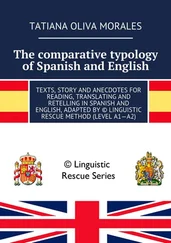1 ...7 8 9 11 12 13 ...18
2.2.4 Regulation in the Norwegian Offshore Industry
The petroleum activities on the Norwegian continental shelf are regulated by the Petroleum Safety Authority, PSA (previously Norwegian Petroleum Directorate, NPD), in the Framework, Management, Facility and Activities Regulations (PSA 2019). Very generic requirements are given to structures in these regulations, mostly indicating the safety level that should be met (structures should be able to withstand all loads at an annual probability of 10 ‐4). The Activities Regulation specifies that the use of structures shall be in accordance with requirements stipulated and any additional limitations identified. Further, the Activities Regulation states that the structures should be maintained so that they are capable of carrying out their required functions in all phases of their life. Maintenance as a term in the PSA regulations includes activities such as monitoring, inspection, testing and repair.
In the guidance to the PSA facility regulation (PSA 2019) reference is made to NORSOK standards N‐001 (Standard Norge 2012), N‐003 (Standard Norge 2017a) and N‐004 (Standard Norge 2013) for how to fulfil design requirements for structures. Further, the PSA regulation refers to NORSOK N‐005 (Standard Norge 2017b) for requirements to in‐service integrity management and NORSOK N‐006 (Standard Norge 2015) for assessment of existing structures.
NORSOK N‐001 (Standard Norge 2012) specifies general principles and guidelines for safety of structures. The standard is valid for all types of structures and covers the use of several types of materials such as steel, concrete and aluminium. NORSOK N‐001 (Standard Norge 2012) further refers to the following accompanying standards in the NORSOK N‐series of standards for specific topics:
NORSOK N‐003 (Standard Norge 2017a) provides the principles and guidelines for calculating loads and load effects;
NORSOK N‐004 (Standard Norge 2013) presents methods for the design and strength evaluations of steel structures;
NORSOK N‐005 (Standard Norge 2019) presents requirements for integrity management and in‐service integrity management of structures during operation;
NORSOK N‐006 (Standard Norge 2015) gives recommendations for assessing structures in operation, including recommendations for life extension.
2.3 Standards and Recommended Practices for Steel Structures
2.3.1 Introduction
The SIM process is often defined as; the collection of necessary information about the structure, its condition, its loadings and its environment to enable sufficient understanding of the performance of the structure to ensure that loading limits are not exceeded and that safe operation is assured.
The most recent SIM standards are based on a major hazard approach to the integrity management of structures and other assets, as exemplified in API RP 2FSIM (API 2019a), API RP 2MIM (API 2019b), ISO 19902 (ISO 2007), ISO 19901‐9 (ISO 2019a) and NORSOK N‐005 (Standard Norge 2017b), which are further discussed in this section. This approach is based on methodology that seeks to understand the hazards to which the structure is exposed, the possible consequences of these and how these should be mitigated. This includes ensuring that suitable safety measures (often called barriers) to protect against the hazards turning into unfavourable consequences are established and maintained throughout the life of the facility. A key element of the major hazard and barrier management regimes is the prioritisation of activities, including inspection and repair for the important safety systems and barriers. Several standards and reports have been published on the principles of SIM, such as HSE RR684 (HSE 2009). These identify a number of key processes which are considered good practice in SIM, together with an appropriate management scheme and documentation.
Inspection is a key element of the surveillance activities and will include in‐service inspection of the structure to identify deterioration, degradation and damage. The process of identifying such anomalies will often be the most extensive and costly part of the surveillance activity (both strategy and programme).
Repair is the necessary mitigation activities in order to retain the safety of the structure if inspection has revealed anomalies of significant concern. The repair method of choice is typically based on output from a structural evaluation or assessment.
Several standards have recently been developed to guide the operators of floating facilities in their integrity management including inspection, such as ISO 19904‐1 section 18 (ISO 2006) and NORSOK N‐005 appendices F, G, H and I (Standard Norge 2017b). Further, a document prepared by Oil & Gas UK (O&GUK 2014) on the management of ageing and life extension for floating production installations provides detailed information relevant for inspection of ageing floating installations. Inspection features as a key control measure in managing the ageing mechanisms such as fatigue and corrosion, although little detail is given on the actual recommended inspection tools and technique. The main topics in the Oil & Gas UK (O&GUK 2014) are the integrity management and inspection of:
hull (structural and watertight integrity);
marine system, including ballast system, control system, cargo system, inert gas system and marine utilities (pumps, generators, etc.);
station‐keeping systems (mooring and DP).
NORSOK N‐005 (Standard Norge 2017b) builds upon this Oil & Gas UK (O&GUK 2014) report, breaks down the non‐structural systems into a number of components and identifies whether inspection based on class rules or based on generally accepted maintenance standards such as NORSOK Z‐008 (Standard Norge 2011) is appropriate.
Standards and recommended practices for SIM are given in API RP‐2SIM (API 2014b), API RP‐2FSIM (API 2019a), API RP‐2MIM (API 2019b), ISO 19902 (ISO 2007), ISO 19901‐9 (ISO 2019a), NORSOK N‐005 (Standard Norge 2017b) and HSG65 (HSE 2013). These do to a large extent include the SIM process described above.
2.3.2 API RP‐2A and API RP‐2SIM (Structural Integrity Management)
API RP‐2A has since 1969 been providing guidance for offshore structure, including surveys (inspections) during operation. The required surveys range from a minimal annual inspection (level I) to more extensive inspections at longer intervals (levels II–IV), depending on manning levels and exposure (API 1993). This approach has since been taken up by other standards. A brief overview of the required surveys required for manned and unmanned platforms is shown in Table 1.
Table 1 Inspection Intervals According to API RP‐2A (API 1993).
|
Interval years for manned platforms |
Interval years for unmanned platforms |
| Level I inspectionEffectiveness of CP systemAbove water visual survey In the event of suspected underwater damage, a level 2 survey was stated to be required. |
Annual |
Annual |
| Level II inspectionGeneral underwater visual surveyDamage surveyDebris surveyMarine growth surveyScour surveyAnode surveyCathodic potential The detection of significant structural damage is stated to be the basis for a level 3 survey. |
3–5 years |
5–10 years |
| Level III inspectionVisual inspection of preselected areas or areas with known or suspected damageCleaning of marine growth The detection of significant structural damage is stated to require a level 4 survey |
6–10 years |
11–15 years |
| Level IV inspectionUnderwater NDT of preselected areas or areas with known or suspected damageDetailed inspection and measurement of damaged area |
Dependant on outcome of level III inspection |
Dependant on outcome of level III inspection |
API RP‐2SIM (API 2014b) was developed from the API RP‐2A (API 2000), ISO 19902 (ISO 2007) and industry best practices. The aim was to provide a stand‐alone recommended practice (RP) for structural integrity that clarified the link between platform data, risk categorisation, fitness‐for‐purpose (FFP) assessment and inspection. The risk categorisation depends on the likelihood of failure and the consequences from failure, in terms of manning level and environmental exposure. The risk categories are expressed as L‐1 to L‐3, with L‐1 being the higher risk platforms (typically manned or high environmental consequence).
Читать дальше












